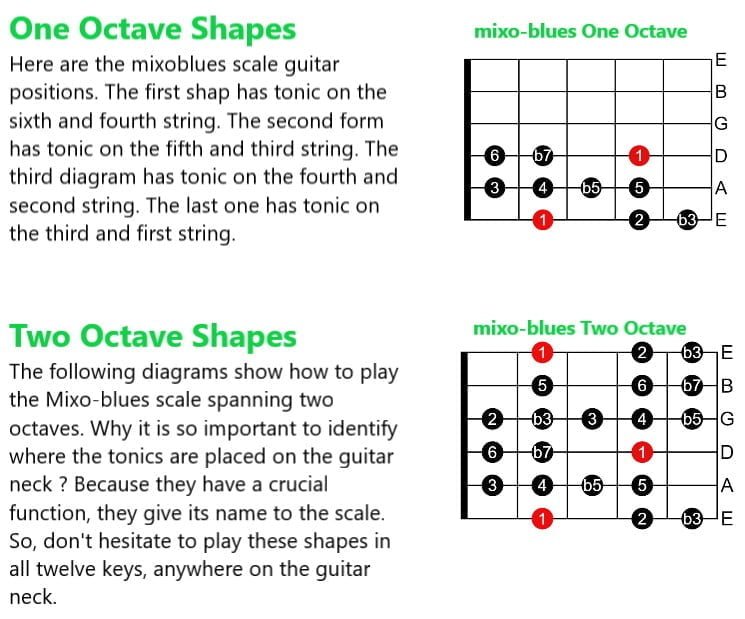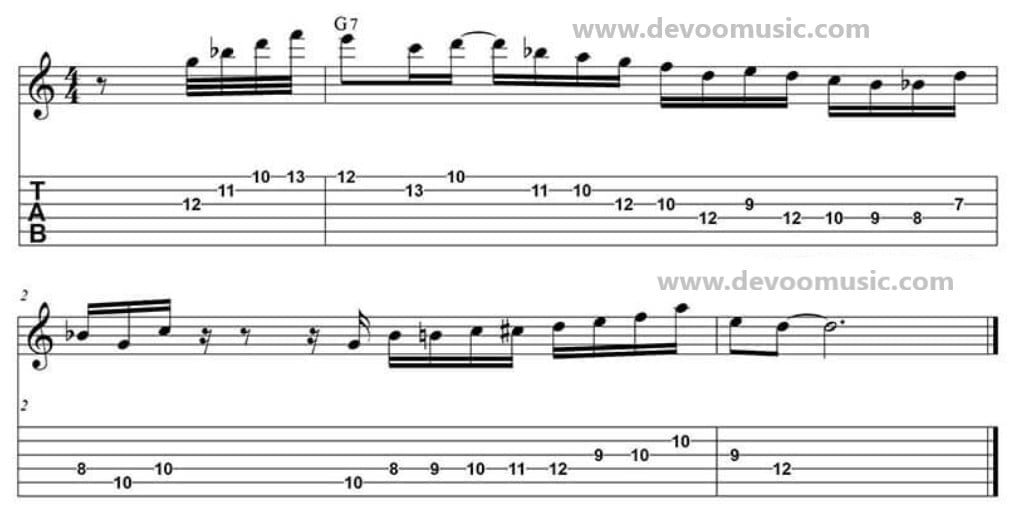What is The Mixolydian Blues Scale?
The mixolydian-blues scale can be confusing because of its different names. Indeed, it can also be called Mixolydian blues scale or mixolydian-Dorian blues scale or even mixolydian / blues hybrid scale. Anyway the result is the same, this scale is a combination of the minor blues scale (1-b3-4-b5-5-b7) and the Mixolydian mode 1-2-3-4-5-6-b7, it belongs to the “hybrid scales family”. The result of this mix is a nona tonic scale containing nine notes, here is the formula 1 – 2 (9) – b10 (or #9 or b3) – 3 – 11(4) -b5(#11) – 5 – 13(6) – b7.
Formula Chart

W= whole step – H=Half step
Notice that the b10 is the same note as the minor third (b3), theoretically we cannot have two thirds, that’s why it is better to call it b10 (also considered as a raised ninth (#9)).
There are some possible extensions in it, the ninth (9), the raised ninth (#9), the eleventh (11), the raised eleventh (#11) and the thirteenth (13). That means you can play the mixoblues scale over the following dominant 7th chords (example given in C) :
C7, C9, C#9, C11, C#11, C7b5, C13.
The Mixolydian blues scale is a nice choice for coloring basic Mixolydian lines. An effective solution when you want to add a bluesy touch and spice up your playing over any dominant seventh chord.

George Benson – Mixolydian blues Lick
This example shows how George Benson used the Mixolydian blues scale. This lick is a transcription of his solo in “Last train to Clarksville” a cover of the Monkeys. You can notice that the G mixolydian blues scale is played over a G7 chord.
There are no particular difficulties in this line, except perhaps the choice of the fingering. Once you have learned this line, you must be able to play it in any key and make it evolve by adding notes that you hear or that you feel.
The aim of learning licks like this George Benson’s riff is to be able to replace them in your guitar improvisations. Not necessarily note-by-note but that the general idea comes out naturally in your playing.


